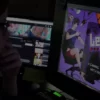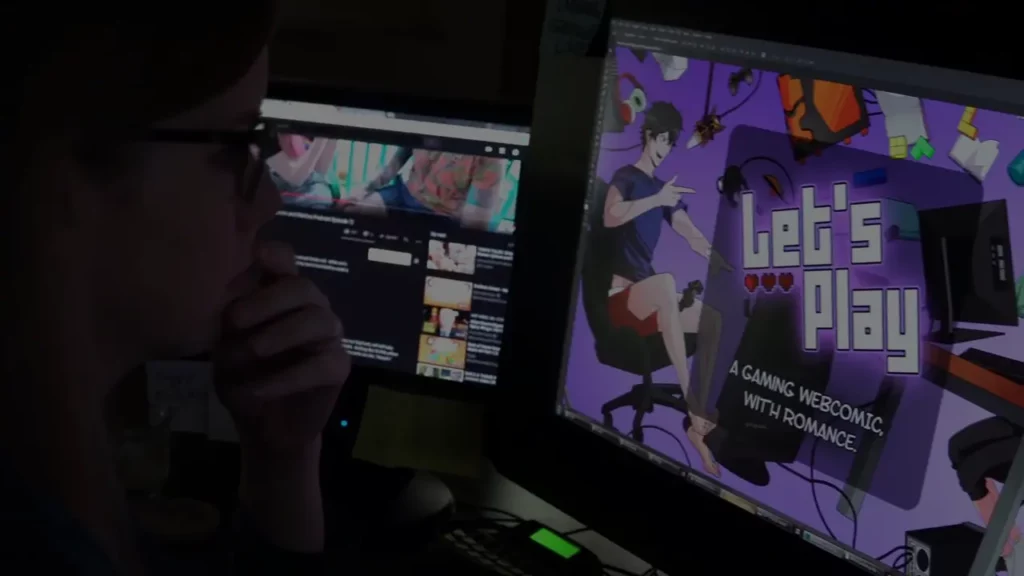 First, a little background . . . Where do I get off talking about this topic?
First, a little background . . . Where do I get off talking about this topic?
In 2015, I resigned from my position in IT, where I had worked for eleven years, and decided I was ready for a career change. Since I hadn’t taken a vacation for four years before leaving my previous job, I took six months off to rest and recover my energy before pursuing my dream of creating a comic. During that time, I started writing comic scripts and sketching character concepts. It was a wonderful time of exploration and ensconcing myself into one of my true passions: worldbuilding.
I created numerous storylines and wrote out multiple scripts, only to put them on the shelf. It wasn’t until I settled on “Let’s Play,” a story about a young woman working in a STEM field who wanted to be an indie game developer and grow into a mature, independent woman, that I got to work drawing the actual comic itself. Why do I mention this? Because “Let’s Play,” a comic title with more than 5 million international readers, translated into multiple languages, a bestselling comic, was my fourth storyline choice.
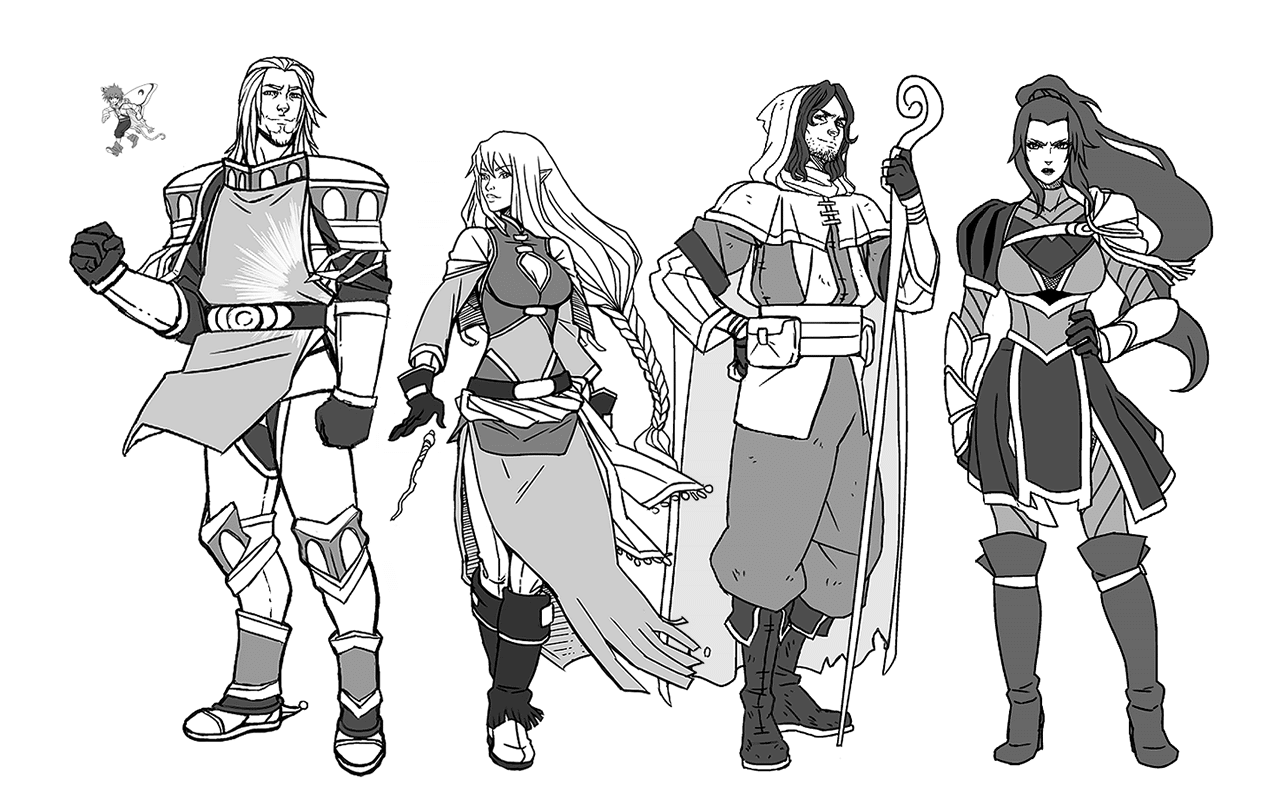 Despite 80 pages of a script written about this project, it was shelved.
Despite 80 pages of a script written about this project, it was shelved.
I knew my first three comic concepts would be difficult to succeed in for several reasons. The physical demand would be too much for me as my debut comic, or the genre (i.e., fantasy) would make it challenging to gain readers due to its lack of popularity.
But I didn’t give up. Because I knew I had a story I wanted to tell.
What even is a webtoon?
I need to clarify what a webtoon is since there can be a lot of confusion about its identity. A webtoon is a digital comic form that originated in South Korea. It utilizes the infinite scrolling canvas possible on electronic devices (PC, mobile, etc.) The best layman’s explanation I use for describing the webtoon format to the curious is to say, “It’s like reading a storyboard.”
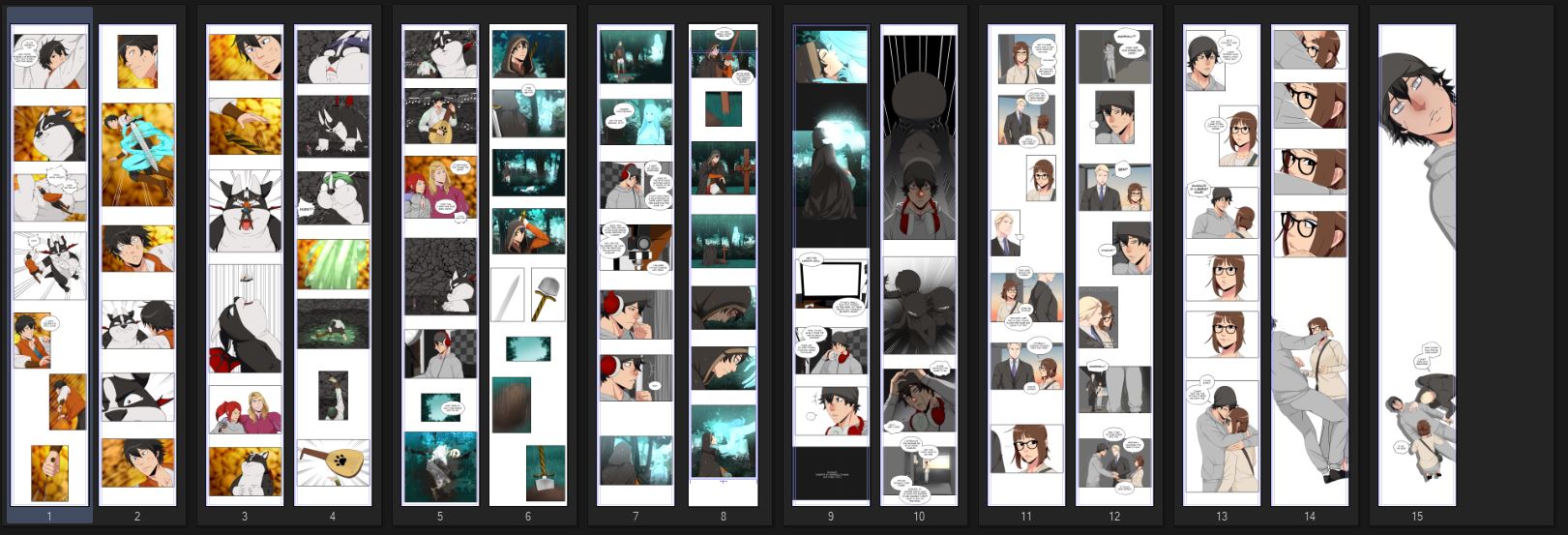 Long, vertical pages designed to optimize the scrolling feature of electronic devices.
Long, vertical pages designed to optimize the scrolling feature of electronic devices.
On the other hand, a Korean-owned platform named “WEBTOON” has webtoon comics available to read. It is available online and on mobile devices in several languages. However, it is essential to understand that just because a comic is in the webtoon format doesn’t mean it’s on the platform WEBTOON. Several other webtoon platforms are on the market, such as Lezhin Comics, Tapas, TappyToon, and Manta.
That’s cool and all, but . . .
“What advice can you give a new creator?” is probably the most frequent question I get asked at panels and signings, so I felt there is a demand and a need for this information.
I’ll be blatantly honest in this post and lay out the facts. I thought I had an idea of what to expect when I switched careers to be a webtoon creator, but after being ensconced in it for nearly five years, I still find myself astonished by the new challenges it can throw my way. And I hope that by writing this article, I can relay some essential information to new, fledgling creators so that they may not suffer as I have suffered.
This article focuses more on information for those who want to be a published creator on a company-owned platform. If you are interested in only being an independent creator, then there may still be helpful information in this article for you.
So you want to make a webtoon?
Writing essentials
- Have a Start and an Ending
Don’t start publishing your comic until you know how the story will end. You don’t have to have all of the details of the story’s development in the middle fleshed out. But you need to know the starting point and the end goal. One of the biggest regrets I hear from other writers is from those who started their story but have no clue how to end it. Those writers could have avoided a lot of stress if the ending had been determined before a readership and fanbase were established. - Have an Outline
A general outline of essential plot points can be very beneficial, especially if you get lost in the details. A publisher interested in picking up your story may also request your outline to see what you have planned for your story and see if it is something they are interested in featuring on their platform. - Script Writing
Script writing for a webtoon is similar to script writing for a traditional comic. I wrote scripts using the traditional comic scripting method for the first 12 episodes of “Let’s Play” before deciding it was a waste of time, and I never wrote another script for “Let’s Play” again. If you need the structure of a script to help you organize your panels and/or work with your assistants, then, by all means, use them for your work. If you are hoping to appeal to a webtoon platform, they may request some of your scripts to read to get a better idea of your storytelling capabilities. - Continuity Editing
After 175 episodes of my webtoon title, continuity editing can be a bit of a nightmare. I even find myself messaging big fans of my comic to ask them a question if I’m unsure of the answer. Fortunately, there is software out there that can help you track many of these details. I use the software bibisco. It can store numerous amounts of information about your characters and ask you various questions about their personalities to help you further develop them. It has a 30-day free trial, followed by a “name your price” buying option. When the live-action team approached me to option “Let’s Play,” I provided them with the reports this software generates.
Drawing essentials
- Traditional or Digital
Every artist has their preferred drawing medium. Most webcomic and webtoon creators draw digitally, but some artists still create their comics using traditional methods (all my respect.) If you’re a traditional artist who refuses to draw digitally, don’t think that eliminates you from having a web-based comic. But understand that it may add more work for you in the long run. - Software
There are several software options available, but my recommendation is Clip Studio Paint. It is the workhorse that Photoshop wishes it could be. It is also designed to cater to comic creation, whereas Photoshop lacks a lot of the structure and functionality that Clip Studio Paint implements to help the user save time. It has script editing. Easy panel setup. Quick speech-bubble creation. And the list goes on. Also, many webtoon creators use the software Sketchup by Google to save time from drawing backgrounds in their panels. However, this software doesn’t come cheap. And it gets even more expensive if you use rendering software to enhance the output.
Money
Like in any entertainment aspect of the industry, the more successful you are, the more you are compensated. The money could be very good, or the money could be very bad. But starting, most new webtoon creators may only make a few hundred dollars an episode, depending on the platform.
This is why I feel having a secondary or even tertiary income is essential to help support your finances when starting. For the last 3/4s of season 1 of Let’s Play, I used money from my Patreon to hire an assistant to assist me with the work demands. And it was one of the best investments I could have made. Other options are streaming your work on Twitch. Taking donations through Ko-fi. Or, as some brave creators have used, OnlyFans.
Legal Matters
Becoming a published creator means you will sign many contracts and other paperwork. These are not simple forms. These are legitimate contracts that may affect your rights and intellectual property. If I have one piece of advice for any new creator who is being offered a spot as a creator on any platform, it is to get a lawyer. Have them review all the contracts you are asked to sign and confirm you understand everything in detail. The last thing you need is to toil with any legal issues.
I’m old enough to be thoroughly jaded by corporate America, so when I received my first contract, I asked a friend who was a prosecuting attorney to review it for me. He and I sat for 2 hours, laboring over each sentence to ensure I understood every part.
If unsure where to start, give Creative Contract Consulting a look. Also, lawyers can be expensive, but several lawyers will do a free initial consultation. Some may work on a retainer, while others may work on a percentage, where they are paid a small percentage of the amount you are compensated under the terms of the contract they are working on with you.
Also, find your own lawyer. Do not use a lawyer recommended by the other party involved in the contract, as this will result in a conflict of interest.
Time and Physical Demands
Remember how I said I didn’t have a vacation for four years before leaving my last job? I’m no stranger to hard work. Working in IT, I had to work a lot of late hours. However, the work webtoon creators have to put into each week to get their episodes done is on another level. Yaongyi, the creator of the popular webtoon “True Beauty” stated in an interview that, on average, she has to take four all-nighters a week to meet her weekly deadline.
If you are working with a webtoon publisher, there is a solid chance that they have a minimum panel count required for each episode. I’ve heard some creators have 30 panels a week and others whose count goes up to 100. If you know how long it can take to draw a single panel for your comic, take that x 50 (50 panels) as a starter. So, if it takes two hours to draw one panel of your comic, expect an entire episode to take a minimum of 100 hours to complete before it is due at the end of the week. When speaking with other comic creators who have drawn for American publishers like DC and Marvel, this fact about webtoon creation has been one of the most startling factors for them to learn.
Time limits are the main reason many webtoon creators use the software Sketchup to generate their backgrounds. It is one tool they can utilize to save them time to do other things like sleep.
One software I use for bettering my time management is RescueTime. It works in the background and tracks the software you utilize when your mouse is active. If you are using a browser, it tracks what websites you are using and the time spent on those sites. This software is helpful as it allows me to find the average time it takes me to do specific tasks, and when I am on a time crunch, I better know how much time I need to allot to work to complete all of my tasks. It also has a “FocusTime” option that will lock out other applications and websites on your computer for a set amount of time. This is helpful if you are prone to be distracted.
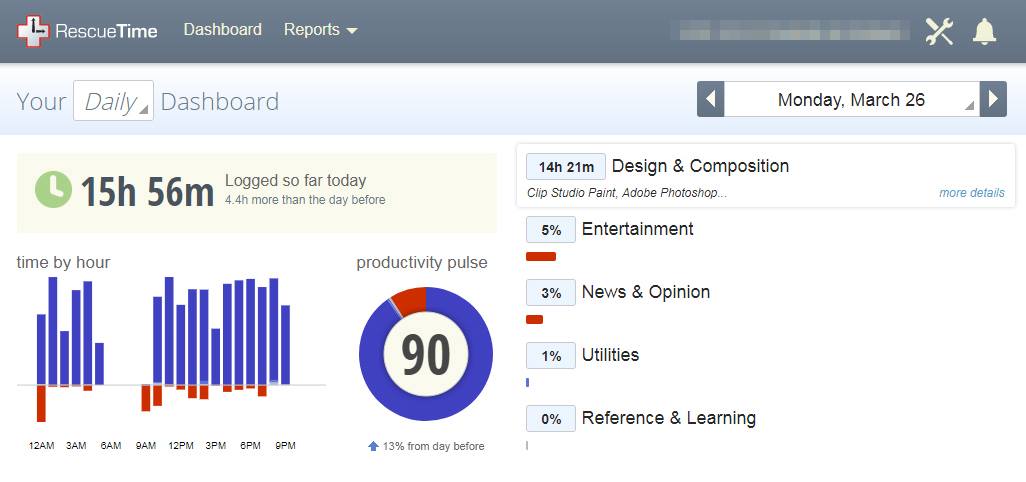 The software RescueTime tracked my work for Monday, March 26th where it automatically tracked me working 14 hours and 21 minutes in those 24 hours.
The software RescueTime tracked my work for Monday, March 26th where it automatically tracked me working 14 hours and 21 minutes in those 24 hours.
Emotional Demands
Your story is your baby. It’s something you’re very passionate about and have grown to love, nurture, and deliver to the world to share. But when sharing your child with the anonymous playground that is the internet, there will be readers who will not hesitate to walk up and kick your baby in the head, and they will go out of their way to tell you how your child is horrible in every way.
It could simply be that the reader doesn’t like reading comics in the genre of your comic. But they leave a comment on your comic about how they feel “all comics in the same genre are derivative and that your work is no different, blah, blah, blah,” and you’re just left questioning why they were reading your work in the first place if they already felt that way about comics in that genre to begin with?
Or they don’t want to see your comic become more popular than their favorite comic, so they rate-bomb your comic and leave harassing comments in the episodes to encourage others to feel the same.
Or better yet, they want the story to go how they want it to, so they go out of their way to contact you and try to do whatever it takes to pressure you into writing the story how they want it to be, including threats of violence, blackmail, and extortion. And you find yourself questioning whether or not you should invest in a stab suit for public appearances.
The world can be a scary place, which can lead to the next topic.
Creator Burnout
Time, physical, and emotional demands are probably the leading factors of creator burnout often seen with webtoon creators. The schedules can be rough. And times are tough for everyone now, but working on an already highly tight schedule doesn’t leave much room for the unexpected difficulties life might throw your way. And the pressure of meeting contractual deliveries, disappointing or angering fans, or not getting the income you need from delivering the episode only adds to the mounting stress.
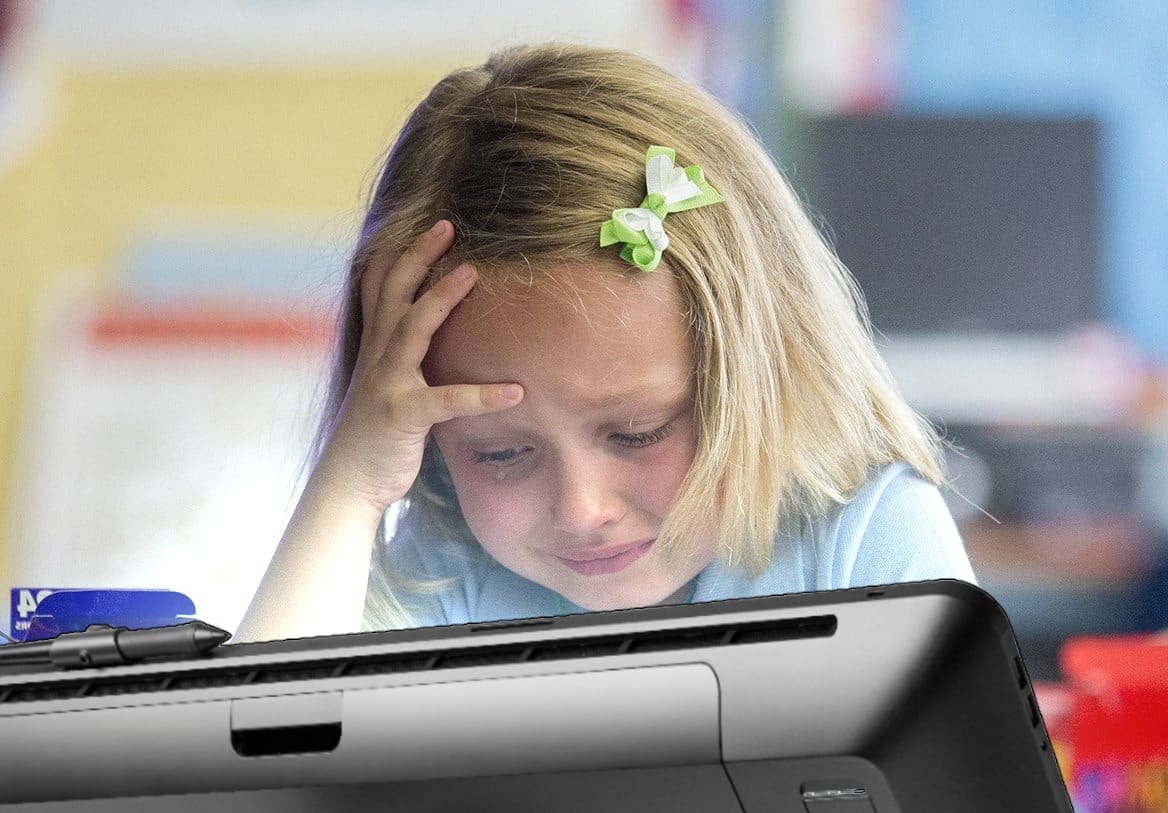 Crying While Grinding.
Crying While Grinding.
You learn that a comic you were working happily on may now be the source of a lot of stress and unhappiness for you in your life, and to continue working on it may only result in more stress and lead to even more burnout. This is why it’s essential to establish a support network, whether it be with friends, family, or professionals. Creator burnout is nothing to be ashamed of, as it can happen to anyone. What is essential is that you get the support you need to ensure you are safe and healthy.
In Conclusion . . .
Being a webtoon or webcomic creator can be a gratifying experience for several reasons. It can be a wonderful outlet for creativity and potentially lead to a career. However, it isn’t always bliss; sometimes, things can get rough. But ultimately, you’ll never know until you try.





